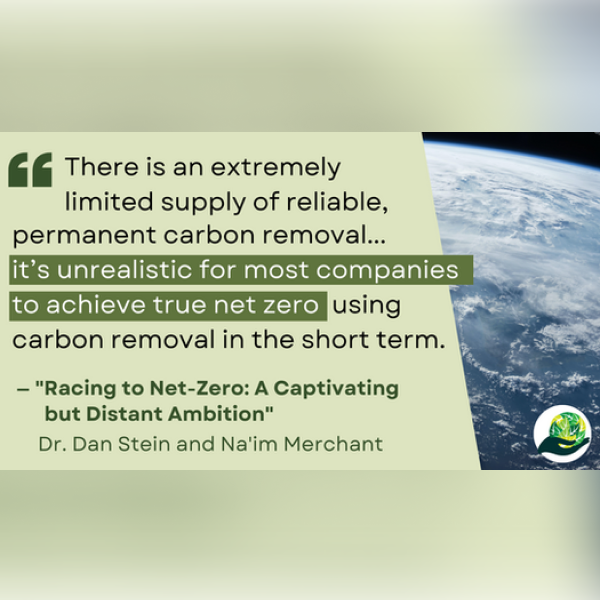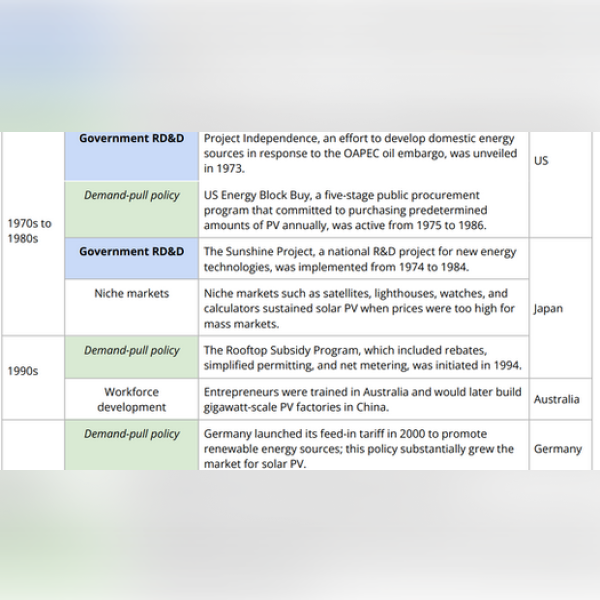Investing for the climate: ESG funds & impact investments
Giving Green’s other work focuses on recommendations of where individuals can donate to effect positive change in the climate crisis. Yet, donations are not the only way that individuals can mobilize their money to combat climate change. Investment -- from retirement funds to venture capital -- has a role to play as well. In late 2021, we began our research on a variety of “sustainable investment” strategies for individuals, including ESG funds and pro-climate impact investing. We describe how these “sustainable” investments work and which -- if any -- are most likely to actually help the climate.

Note: This article is intended for research and information purposes only in order to review the potential positive climate impacts of available investment opportunities, not their financial performance, and therefore should not be construed as investment, financial, or other advice, or construed as a recommendation to buy, sell, or otherwise transact in any investment. We do not endorse any specific product that is referenced in this article. This article is not a replacement for personal financial advice and it is strongly recommended that you review your own personal financial situation and seek professional investment and/or financial advice before engaging in any investing. Reading this article does not create a professional relationship and we are not in the business of providing investment or financial advice. The information provided in this article is as accurate as possible, however errors may occasionally occur and we are not responsible for any errors. We expressly disclaim any liability or loss incurred by any person who acts on the information, ideas, or strategies discussed in this report.
ESG funds & climate impact:
We started our work with a question: Is it possible for normal people to save for retirement, a home purchase, or college tuition while also pushing corporations to act on climate change? We think it might be, but unfortunately, we did not find any simple solutions.
In order to evaluate climate investments, we interviewed experts, examined fund materials, and reviewed academic literature and industry reports. Our examination of ESG investments is concentrated on mutual funds and exchange-traded funds (ETFs). These are the kinds of investments that you might use to save for retirement, a home purchase, college tuition or other big expenses. They generally have lower minimum investment amounts and are easier for normal people (or “retail investors”) to directly invest in.
ESG funds use environmental, social, and governance-related information -- as well as financial information -- when they decide which companies to purchase stocks from. Many climate-oriented investors gravitate towards the E in ESG, hoping to make an impact on climate. Our research, in short, found that it’s not that simple, for a few reasons:
- ESG is an unreliable shorthand for climate. Climate-relevant criteria, like data on emissions, carbon intensity, etc, can get lost or obscured in the mix of other ESG criteria.
- ESG funds tend not to be designed to have real-world impact on the companies they hold stocks in. The evidence shows that an ESG fund investing in or divesting from a given company has little sway over that company’s actions.
So if ESG is not the answer, what can a fund do to have a real climate impact? Although investment managers use an array of terms, we suggest it boils down to two main approaches: portfolio composition, or “what the fund holds”; and shareholder activism, or “what the fund does.”
- What the fund holds: Climate funds vary in the type of information they use to build their portfolio (e.g., ESG scores, industry, specific practices) and the way they use that information (e.g., screening or weighting certain companies). Fossil fuel divestment is an example of a portfolio screening approach to climate impact.
- What the fund does: Climate funds also vary in the degree of shareholder activism they engage in. These funds can pressure companies to change behavior by introducing shareholder resolutions, voting on proxy ballots, negotiating directly with management, and other strategies. Many climate funds combine some type of portfolio composition approach with shareholder action.
The evidence we found broadly supports that shareholder engagement causes real change. We suggest that a track record of climate-oriented shareholder engagement is a good indicator of whether a mutual fund or ETF will influence a company to do better for the climate.
Examples of funds that use shareholder engagement are:
- Medium-sized, older funds like Green Century Funds, Trillium Asset Management, and Zevin Asset Management, which have track records of successful shareholder engagement actions, but may charge higher fees
- Smaller, recently launched funds like Engine’s No. 1’s Transform 500 ETF or robo-adviser Carbon Collective’s portfolios, which have transparent and methodical approaches to climate investing and shareholder engagement and claim to offer competitive fees
- Bigger, generic funds run by large asset managers that have outsize influence on proxy voting results and consistently vote in favor of climate measures, such as Hartford Funds and Columbia Threadneedle.
Read the full report here.
Impact investing for climate impact:
We also investigated climate-focused impact investing opportunities available to non-accredited retail investors in the United States. We considered two classes of investments:
- Private equity refers to direct holdings in private companies. A relatively new mechanism known as “Regulation Crowdfunding” allows retail investors to make limited private equity investments.
- Cash equivalents and fixed-income investments are more conventional, and offer many more opportunities for retail investors. These generally offer a fixed, low to moderate return. We found a range of climate-related offerings, including savings accounts at climate-focused banks, notes offered by loan funds that make climate-related loans, and bonds offered by companies or municipalities looking to fund climate-positive projects.
The impact of these investments really depends on what project the investment is funding. We suggest focusing on two concepts to assess whether a hypothetical project or firm will impact the climate: causality, or the reduction of atmospheric greenhouse gases attributable to the project, and additionality, or an individual investment’s contribution to increasing the impact of the project.
- While conclusions on impact cannot be perfectly generalized across an asset class, we observe some patterns: Startups promise transformative impact, but it is difficult as an investor to predict the likelihood of actually achieving that impact.
- On the other hand, cash equivalents and fixed-income investments usually have strong and defensible links to impact, even if that impact is limited in scope.
- We also noted many opportunities to invest for non-climate co-benefits, including economic development and providing financing to low-income communities.
We’re heartened to see the vast array of options available to climate investors. We aren’t yet sure which is the most impactful for the retail investor. Choosing individual investments involves a lot of sophistication and risk, and we don’t think that betting on specific companies or projects is the right route for most investors. We found one low-cost, low-risk way to support existing climate solutions: moving money to a bank that specializes in lending to clean energy projects, such as the Clean Energy Credit Union. We hope to more rigorously assess these options in the future.
Read the full report here.
We hope these findings serve as a guide to the available opportunities to leverage investment capital for climate impact. We at Giving Green have barely scratched the surface of this wide-ranging and fast-growing industry, and we hope to continue to highlight new opportunities as we discover them.
Support Our Work
Giving Green Fund
One fund. Global impact. One hundred percent of your gift supports a portfolio of high-impact climate organizations, vetted by our research.
Best for:
Donors who want the simplest way to impact multiple climate solutions.
Top Climate Nonprofits
Meet the organizations on Giving Green’s list of high-impact nonprofits working to decarbonize our future, identified through our rigorous research.
Best for:
Donors who want to give directly and independently.
Support Our Work
We thoroughly research climate initiatives so you can give with confidence. For every $1 we receive, our work unlocks another $21 for effective climate solutions.
Best for:
Donors who want to amplify their impact through research.





.png)


.png)






.png)




.png)






.png)


























.png)




.png)






.png)






